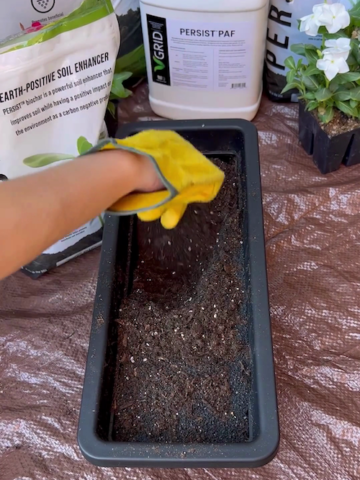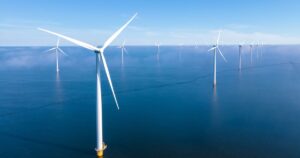
Heads of state, business leaders and activists alike have gathered in Glasgow this week to discuss and decide our future. It’s being called “the last best chance” to address the climate emergency, and the urgency of the moment feels palpable.
It’s easy to get lost in the dire straits of our situation. The warning sign after warning sign after warning sign. The undeniable proof that in spite of some progress — and indeed, some new, important commitments — we’re not going far enough, fast enough.
It’s hard not to feel a painful disconnect when the arduous, impressive paths of current climate pledges will still lead to catastrophe. When the cost of inaction drastically outweighs the cost of action. When there are scores of emission sources we have yet to successfully acknowledge or address — notably for this audience, the significant emissions of supply chains and product waste or the rising impact of the U.S. plastics industry, which is set to outpace coal-fired power plant emissions in the country by 2030.
Pessimism and despair feel an obvious response. But in the face of climate grief — a feeling that, I’ll admit, dear reader, consumes me as of late — Sir David Attenborough’s soothing voice has thrown a proverbial life raft. From the stage of COP26, Attenborough called this a moment of desperate hope and it is that notion that I channel today. Not one of unbridled hope, of unrealistic hope, but of desperate hope that we rise to meet this moment with every tool at our disposal, including circularity.
A neglected tool in the climate toolbelt
The circular economy is a triple threat to climate change: reducing emissions by extending the life of embedded carbon in products and materials; reducing waste and pollution by designing it out of the system entirely; and reducing biodiversity loss by regenerating natural systems and ecological resilience.
In the fight to reduce carbon emissions, it’s been called vital, crucial, cost effective and holistic. As a framework, it’s considered critical to achieving a 1.5 degree world and addressing 45 percent of total global greenhouse gas emissions. And priority materials and intervention points have already been identified.
Yet despite all this, it’s oft-overlooked. Most governments and businesses are failing to connect the dots between circular economy principles and emission-reduction roadmaps, with only a few exceptions.
This disconnect is understandable — measuring the carbon footprint of circular strategies is a complex undertaking, and a fully circular system will require system-wide, paradigm-shifting change to our organizations and economy. The prospect is arguably overwhelming. But the urgency of the moment demands we stop neglecting the powerful impact the circular transition could bestow.
Advice for action
Now that I’ve exhausted the platitudes, it’s time for some actionable advice.
Last week at VERGE 21, I spoke with three business leaders that are changing the narrative, uniting circular and climate strategies in pursuit of their science based targets. Representing disparate industries — from automotive to fashion to food — they offered some meaningful insights into what it takes to embrace circularity and secure a net zero future.
“The most important thing [is a] mindset change.”
— Adam Sykes, vice president government affairs and corporate communications for the Americas, BMW Group
As Sykes noted, “you really need a different mindset.” That’s why BMW’s first guiding principle in their circular economy strategy is “rethink.”
It’s time for bold action. It’s time to shift mindsets, build multiple, meaningful partnerships and to invest in constant evolution.
At the smallest level, this mental shift begins with individual materials — envisioning and designing for their next life at the outset, while viewing their end-of-life incarnation not as waste, but as a resource. At a larger scale, circularity becomes a lens through which to view and evolve the entire value chain and value creation itself.
“There’s opportunities to partner at every step of the way.”
— Jeannie Renne-Malone, vice president of global sustainability, VF Corporation
No organization is an island. To ensure the systems change both circular and carbon commitments require, “you need to build out your network of partners… to help you to achieve those goals,” Renne-Malone shared.
Every stakeholder has a part to play. Farmers can leverage regenerative agriculture, manufacturers can supply repairable or recycled parts, fellow industry players can share learnings — even customers can ensure products are returned after a long, useful life. Through meaningful partnership there’s opportunity to both leverage external impact and influence your partners processes to assure carbon-emission reductions. Bold action requires “bold collaboration.”
“It’s a year over year, constantly evolving process.”
— Emily Johannes, head of sustainable sourcing, Nestlé
“it’s really important to remember that we don’t have it all figured out,” Johannes acknowledged. There are carbon reductions that are difficult to quantify, partnerships that are challenging to build, system changes that are slow to take hold. But to build a future we haven’t seen, we must test, learn and adapt “constantly.”
Prototypes and pilots offer an avenue to innovate and evolve while measurements and monitoring, wherever feasible, help to prioritize initiatives and prove impact over time. When discussing a pilot under Nestle’s strategy, Johannes added, “success under this model is… learning what’s going to work and what isn’t. Really pushing the boundary of innovation… then generating the economic benefit [so environmental successes] continue in perpetuity.”
It’s time for bold action. It’s time to shift mindsets, build multiple, meaningful partnerships and to invest in constant evolution. If we succeed in that, we might have a desperate hope.
Have you seen circular initiatives leading to measurable carbon-emission reductions? Or effectively aligned circular and climate strategies at the organizational level? If so, I’d love to hear from you at .
Source: https://www.greenbiz.com/article/desperate-hope-we-meet-moment










